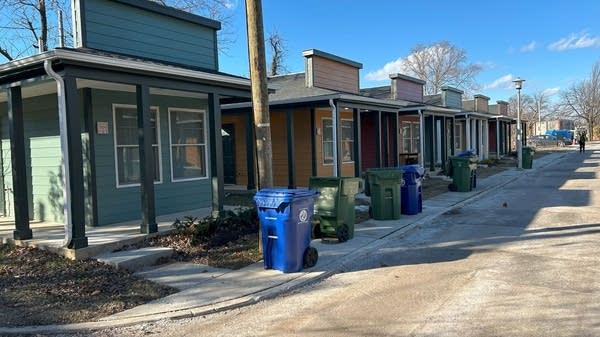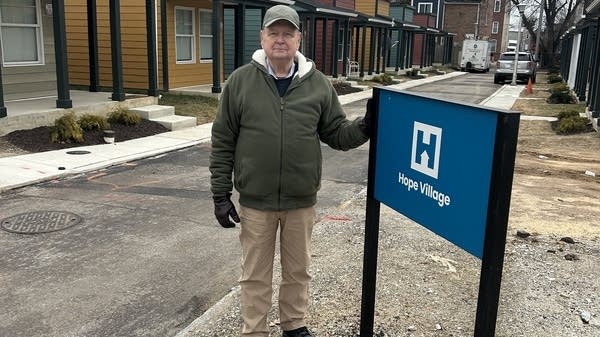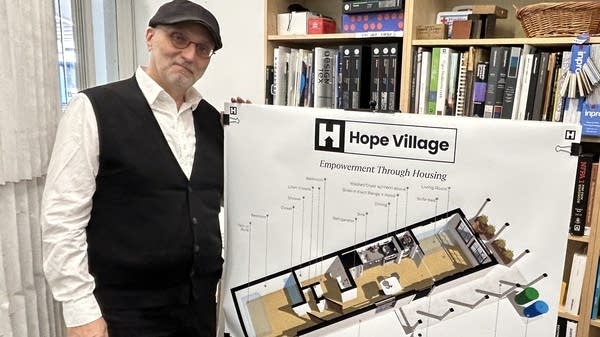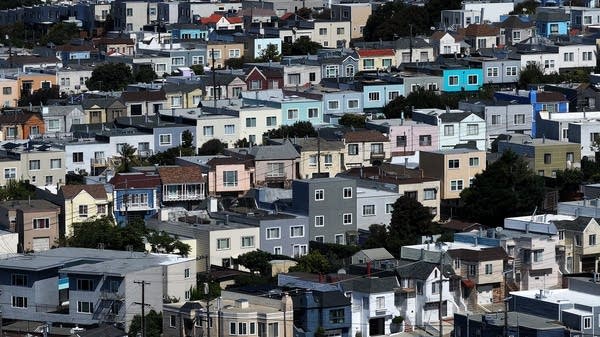Tiny home development in Baltimore offers affordable path to homeownership
In Baltimore, a small community called Hope Village is offering a rare path to home ownership for people with low incomes. It’s attracting attention for affordability and potential scalability.

Across the country, a growing housing shortage has pushed homeownership out of reach — especially for low-income families.
But in Baltimore, one tiny home community called Hope Village is offering a rare path forward. The 13-home development is a place where families, once unhoused and earning as little as $18 an hour, now own homes of their own.
Formithia Cox recently moved into her one-bedroom, 400-square-foot home, where she lives with her husband and her mom.
“The only thing we added in here was the television, the curtains and the items on the wall,” Cox said.
The home came fully furnished, including a washer and dryer. During a tour, Cox’s mother, Aleaze Robertson, broke into song, overwhelmed with gratitude.
“Let the church say, ‘Amen,’” she sang joyfully.
Before marrying, Cox said she was housed, but her husband had been living in overcrowded, unsanitary conditions, sharing space with others.
“It was filthy,” she said. “We did not use the stove, the kitchen. We didn't use any of that kind of stuff. So, to go from that to this it's great.”
Cox works as a caregiver. Her husband, Marcel, is a delivery driver. Their mortgage is about $200 a month with a 5% interest. Cox called the move a fresh start.
That’s what Chris and Pam Wilson intended when they built Hope Village. The couple poured some of their retirement savings into the $1.7 million project. The idea began a decade ago when they delivered meals to families experiencing homelessness.
They wanted to be part of a more stable, permanent housing solution.
“These people were so enthusiastic when they got their deeds,” said Pam. "Their faces lit up. We congratulated them, and they have been flying ever since.”

Chris, a former marine insurance adjuster, came up with Hope Village during a work trip to Nigeria, where he noticed long rows of container homes.
“That gave me the idea: ‘Why couldn’t we do something like that?’” he wondered.
But container-style homes didn’t meet zoning, financing or aesthetic standards in Baltimore.
The Wilsons found an architect and a construction firm to work pro bono. The homes feature colorful siding and wrap-around porches to match the neighborhood. Each is valued at about $200,000, but families paid $25,000. The Wilsons did not profit from the project.

Mac McComas, senior program manager, at Johns Hopkins University’s 21st Century Cities Initiative, said the tiny home community model shows promise.
While not every city can rely on private donors to fund affordable housing, he said, collaboration can go a long way. One key step is getting early buy-in.
“Take neighborhood concerns into consideration, that you’re not just coming in with what you think is a great idea, but making sure that the community has bought in,” said McComas.
He also recommends using prefab materials to cut costs and patience — lots of it — to overcome regulatory hurdles.
The Wilsons said they knocked on doors and heard no objections. With Hope Village now complete, they said the model could be scaled.
“We just need people to support it financially, because we don’t have income to build too many more houses,” Chris Wilson said.
Pam Wilson added that similar developments can save cities money. “People won’t have to be housed in shelters and they’ll be paying property taxes,” she said.
At Hope Village, the Cox family is settling in — and already taking on projects.
They’re figuring out how to build a fence. Formithia Cox said they plan to set up a grill and spend summer evenings barbecuing with neighbors.
“It’s beautiful. I’m thankful, I’m thankful to be a part of it, you know?” she said.













